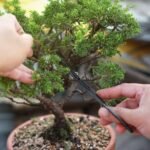Best Plants for Low-Light Indoor Spaces
Creating a lush, vibrant indoor garden can be challenging, especially if your space lacks abundant natural light. Fortunately, several plant species thrive in low-light conditions, making them perfect for brightening up those shadowy corners of your home. Here’s a guide to the best plants for low-light indoor spaces that will add beauty and vitality without needing much sunlight.

Benefits of Low-Light Plants
1. Adaptability:
- Versatile Placement: These plants are perfect for rooms with minimal natural light, such as offices, bathrooms, or north-facing rooms.
- Low Maintenance: Many low-light plants are hardy and require less frequent watering and care.
2. Air Purification:
- Improved Air Quality: Many low-light plants help filter and purify the air, making them not only attractive but also beneficial for your indoor environment.
3. Aesthetic Appeal:
- Decorative: Low-light plants add greenery and texture to indoor spaces, enhancing the aesthetic appeal of your home.
Top Low-Light Indoor Plants
1. Snake Plant (Sansevieria trifasciata)
- Appearance: Tall, upright leaves with variegated green and yellow stripes.
- Benefits: Extremely hardy and adaptable; tolerates low light and irregular watering.
- Growing Conditions: Thrives in low to bright indirect light; prefers well-drained soil. Hardy in USDA zones 9-11.
2. ZZ Plant (Zamioculcas zamiifolia)
- Appearance: Glossy, dark green leaves that grow in a graceful, arching pattern.
- Benefits: Very low maintenance; tolerates low light, drought, and neglect.
- Growing Conditions: Prefers low to bright indirect light; well-drained soil. Hardy in USDA zones 9-11.
3. Pothos (Epipremnum aureum)
- Appearance: Heart-shaped leaves with a variety of colors and patterns, including green, yellow, and white.
- Benefits: Fast-growing and adaptable; great for hanging baskets or as a trailing plant.
- Growing Conditions: Thrives in low to bright indirect light; well-drained soil. Hardy in USDA zones 10-11.
4. Peace Lily (Spathiphyllum spp.)
- Appearance: Glossy, dark green leaves with striking white flowers.
- Benefits: Excellent air purifier; tolerates low light and adds a touch of elegance.
- Growing Conditions: Prefers low to bright indirect light; keeps soil consistently moist. Hardy in USDA zones 10-11.
5. Cast Iron Plant (Aspidistra elatior)
- Appearance: Broad, dark green leaves that add a lush look to any space.
- Benefits: Extremely durable and low-maintenance; perfect for low-light areas.
- Growing Conditions: Thrives in low to moderate indirect light; prefers well-drained soil. Hardy in USDA zones 6-11.
6. Chinese Evergreen (Aglaonema spp.)
- Appearance: Variegated leaves in shades of green, silver, and red.
- Benefits: Tolerates low light and is easy to care for; provides a splash of color.
- Growing Conditions: Prefers low to moderate indirect light; well-drained soil. Hardy in USDA zones 10-11.
7. Boston Fern (Nephrolepis exaltata)
- Appearance: Lush, feathery fronds that add a touch of greenery and elegance.
- Benefits: Adds humidity to the air; thrives in lower light conditions with proper humidity.
- Growing Conditions: Prefers low to moderate indirect light; keeps soil consistently moist. Hardy in USDA zones 9-11.
8. Spider Plant (Chlorophytum comosum)
- Appearance: Arching leaves with white stripes, often producing small plantlets or “babies.”
- Benefits: Easy to grow and propagate; adapts well to low light conditions.
- Growing Conditions: Thrives in low to bright indirect light; well-drained soil. Hardy in USDA zones 9-11.
9. Dracaena (Dracaena spp.)
- Appearance: Long, narrow leaves with a range of colors and patterns.
- Benefits: Low-maintenance and adaptable; can tolerate low light and irregular watering.
- Growing Conditions: Prefers low to bright indirect light; well-drained soil. Hardy in USDA zones 10-11.
10. Parlor Palm (Chamaedorea elegans)
- Appearance: Graceful, feather-like fronds that add a tropical touch.
- Benefits: Tolerates low light and adds a lush, tropical feel to indoor spaces.
- Growing Conditions: Prefers low to moderate indirect light; well-drained soil. Hardy in USDA zones 10-11.
Tips for Caring for Low-Light Indoor Plants
1. Watering:
- Moderation: Water when the top inch of soil feels dry. Overwatering is a common issue in low-light conditions.
- Drainage: Ensure pots have drainage holes to prevent root rot.
2. Light:
- Indirect Light: Place plants in areas with indirect light if possible, as even low-light plants benefit from some light exposure.
- Artificial Light: Consider using grow lights if natural light is extremely limited.
3. Soil and Fertilizing:
- Soil Type: Use well-draining soil appropriate for the specific plant species.
- Fertilizing: Feed plants with a balanced fertilizer during the growing season, typically spring and summer.
4. Humidity:
- Humidity Needs: Some low-light plants, like ferns, prefer higher humidity. Consider placing a humidity tray or using a humidifier if necessary.
5. Pests and Diseases:
- Monitoring: Regularly check for common indoor pests such as spider mites or aphids. Treat infestations promptly.
- Clean Leaves: Wipe leaves with a damp cloth to remove dust and keep plants looking healthy.
Conclusion
Choosing the right plants for low-light indoor spaces can greatly enhance the ambiance of your home while requiring minimal maintenance. By selecting hardy, adaptable species and providing them with proper care, you can enjoy a thriving indoor garden that adds beauty and fresh air to your living environment.



